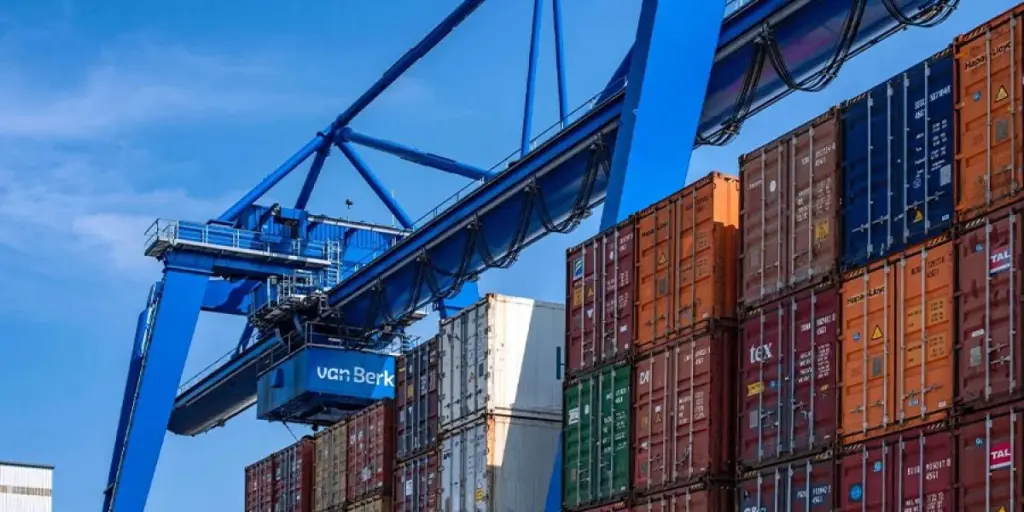Receiving refers to the process of accepting and documenting the arrival of goods or products into a warehouse or distribution center.
The receiving process is not simple, it contains many important steps including physical inspection, verification, and recording to ensure accuracy. Whether products are being received as inbound SKUs from the manufacturer or as returned merchandise from DTC customers, it’s so important to have an efficient receiving system.
The faster products are integrated into your fulfillment flow, the faster they can be fulfilled as orders to customers.
Why is Efficient Receiving Important?
For ecommerce businesses, receiving products to their warehouse or distribution center is a critical aspect of inventory management. Your receiving inventory method has a direct impact on customer satisfaction and overall business growth—without efficiency in this critical step of the supply chain, products may get lost, delay orders, or become obsolete before they can be sold.
Many brands tend to oversimplify or understate the receiving process and fail to have a clear plan for their receiving flow. The importance of efficient receiving can be realized in the revenue obtained from the items being placed into your inventory. If your receiving is inefficient, goods will accumulate in the warehouse leading to unnecessary storage costs and missed opportunities for monetization. This will have a direct impact on your inventory accuracy, inventory tracking, fulfillment workflow speed, customer satisfaction, and ultimately revenue; when capital gets tied up in unmoving inventory it can result in larger business handicaps.
Optimize Warehouse Receiving Best Practices
Some ecommerce businesses process receiving in-house within their own warehouses, while others outsource to a 3PL or logistics partner. Either way, work with your warehouse operations and receiving team to set up the following:
1. Categorize incoming items
It is crucial to immediately classify and document the condition of the items upon receipt. This is the first step to getting items into your storage system. Work to streamline this process to be as efficient as possible so that inventory levels are accurate (i.e. no deadstock, overstocking, or stockouts).
2. Create clear path for each type of goods
Write clear business rules to determine how the goods get sorted within the distribution or fulfillment center. Create clear documentation so that warehouse staff have operating procedures regarding the classified products.
For returns, this step of the receiving procedure is critical as it can help prioritize items that should be reintegrated into the inventory for resale. When your receiving team can get items into stock quicker, it will mean faster turnaround into order fulfillment, even a few days can make or break customer satisfaction.
3. Establish quality control metrics
If there are any discrepancies in your inventory counts, it may lead to lost sales, stockouts, or inaccurate orders. Some quality control checkpoints should include regular audits, real-time updates and communication channels and proper documentation of any issues for root cause analysis.
Receiving for Returned Merchandise
Many ecommerce businesses assume that returns are just lost products. Depending on your product mix, you may be able to recoup revenue from returned goods in a few different ways. The key to this is a high quality receiving procedure.
- Documenting incoming shipments that have been returned from customers is a best practice, and the first step to efficient receiving of returns.
- Categorizing why items are returned is the best way to find defects in your goods, inefficiencies in your fulfillment process, and establish the highest customer satisfaction. Some companies will established a pre-receiving flow where they will ask customers why they are returning goods. This information can be included in the receiving process. It’s wise to also add a double-check system within receiving to ensure customer assessments are correct.
- Refurbishing damaged goods will help recoup revenue to items that can still be resold. Consumer electronics products, as an example, can often be reworked quickly and effectively if they only need re-flashing or software updates. Any automation that can be established to speed up this type of refurbishment work the better. Quality checks should be implemented within any rework program.
- Disposing of goods is sometimes the only option if they are badly damaged or not-sellable. Find a cost-effective method of disposal, there are many. If it fits your brand and product is to consider a donation campaign.
While reverse logistics is considered a hassle by many brands, it’s an area of opportunity to drive incremental revenue and operational cost savings.
Automation for an Efficient Warehouse
One of the best ways to create efficient receiving procedures is to automate any aspect you can. This will in turn enhance your inventory management. Many tech-forward 3PLs rely on a barcode system or use UPC codes assigned to each unit. Barcode scanners will help reduce human error while workers sort SKUs, lots, or other aspects of your product mix.
These codes should sync with your warehouse management system (WMS) for an efficient and digitized inventory management system. Inaccurate inventory levels lead to all kinds of problems downstream. Automation will give you real-time data and insights into where all of your products are, whether they are returns, being refurbished, or just arrived into the receiving area to be put into stock.
Bottom Line
One of the key components to proper warehouse management and inventory management is your receiving procedures. It may seem time-consuming to take many quality checks before getting inventory into stock. But the more time you put into an organized receiving dock and streamlined receiving operations, the more you’ll have accurate inventory numbers and happy customers.
Source from DCL Logistics
Disclaimer: The information set forth above is provided by dclcorp.com independently of Alibaba.com. Alibaba.com makes no representation and warranties as to the quality and reliability of the seller and products. Alibaba.com expressly disclaims any liability for breaches pertaining to the copyright of content.




